LG has a range of summer open days across the UK, to present their demo trials, alongside Limagrain’s technical experts who will be providing all the latest information on new & existing varieties.
As well as the LG experts, each event will feature industry experts from within the agricultural sector, providing technical information on an array of topics such as fertiliser & micronutrients, agrochemicals, SFI’s and more. On top of this, we will again be running the Moisture Meter Clinic, which has been a farmer favourite in past years.
LG’s Summer Demos will have a wide assortment of winter wheat varieties to show, including Limagrain’s No.1 highest yielding variety; LG Beowulf, and a taste of Limagrain’s up and coming RL Candidates and NL2 offerings.
Alongside this, they will also be displaying commercial competitor varieties, with both untreated and treated plots.
Rothwell and Woolpit will be showing all varieties in the Limagrain winter barley portfolio, including the 2 highest yielding; LG Caravelle & LG Capitol, plus exciting new BYDV tolerant RL Candidate, LG Carpenter.
Register now…
—-> Tues 9th July – Rothwell, Lincolnshire
—-> Weds 17th July – Perth, Perthshire
BASIS/NRoSO points will be available for each Demo Day.
If you are thinking of growing an LG variety, have an interest in learning more, or have any questions for our experts, Register Now for one of our Demo Days.
Limagrain Upgrades Malting Barley Laboratory at UK Head QuartersOur malting barley laboratory at Rothwell in Lincolnshire has been upgraded to increase testing capability for the early screening of new varieties, from 1000 to 4000 samples a year, for both the UK and European markets.
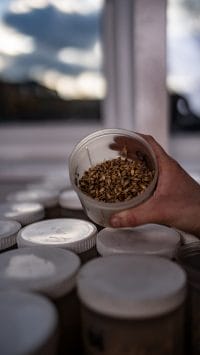
“This will allow us to use the data generated more efficiently to enable more accurate genomic selection, to better predict the malting potential and quality of the next generation of malting barleys,” says Sophie Buon, barley breeder.
“This new approach will test varieties under different micro-malting regimes, that require less water and less steeping – and in response to end user requirements, do this in the most carbon neutral way possible.”
“We hope that the new facility will encourage end-users to visit and see for themselves, the extensive work that we are doing to breed new and exciting malting barley varieties, that meet all of today and tomorrows market requirements.”

Five priorities when choosing a spring barley variety
Spring barley is an important rotational option on many farms, and more growers may be looking to the crop in 2024 as exceptionally wet autumn weather has disrupted winter cropping plans.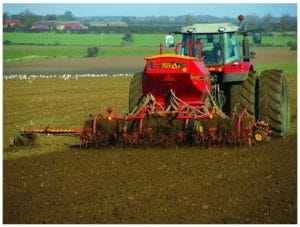
But, whether the decision to grow spring barley is planned or unplanned, There are some key factors to consider says Limagrain UK arable technical manager, Ron Granger.
Market requirements
Start by fully understanding your grain buyer’s requirements in terms of variety and grain quality, especially when looking to supply premium brewing or distilling markets.
In some instances, contract specifications will dictate the variety that must be grown to supply a particular market, and criteria such as grain nitrogen content, will have an important impact on agronomic decisions and crop inputs throughout the season.
Dual use potential
Where variety choice is not dictated by the end user, growers have flexibility to select one that suits their requirements, growing conditions and farm situation.
Mr Granger recommends considering a dual use variety such as LG Diablo, which combines decent yield performance, with multiple end market opportunities, offering an advantage over many varieties now listed.
Vigour and tillering capacity
LG Diablo offers excellent spring vigour and high tillering capacity, which is a valuable trait in spring barley given the relatively short growing period.
The best way to maximise spring barley yield potential is to ensure high final ear counts. An 8-9 t/ha crop needs around 800 ears/m2, which at a 350 seeds/m2 rate, equates to around 2.5-3 tillers per plant at harvest.
Choosing a more vigorous tillering variety will help, as it will give some reassurance that the optimum tiller count will be reached.
Where spring barley is being used in a black-grass situation, it is important that a vigorous, high tillering variety is selected, as a high tiller number must be ensured for the variety to compete.
Spring barley is a fast-growing crop and if key nutrients are deficient at any time, yield potential will be affected.
Limagrain trials show that higher yielding varieties respond positively to higher nitrogen inputs, due to their increased yield potential and,more importantly, a dilution of grain nitrogen content.
Phosphate, potash, magnesium and sulphur, have proven beneficial to tiller retention and final yield, while micronutrients, including manganese, zinc, copper, iron, and boron, applied at the stem extension phase into flowering, are also useful.
Disease resistance
Strong disease resistance is an important characteristic to look for in any variety, and spring barley is no exception, with mildew, rhynchosporium, and brown rust being the main considerations, says Mr Granger.
Early drilling can significantly increase disease risk, so it may be particularly important to consider more disease resistant varieties for this situation.
Resistance to lodging/brackling
Choosing a variety with good straw characteristics, is key to protecting yield and grain quality at harvest and potentially offers another significant output from the crop.
While a variety’s RL ratings for lodging and brackling provide a useful indication, it is also important to recognise the role that agronomic decisions play, notably around seed rate, nutrition, and the use/timing of growth regulators.
LG GatePost Newsletter – June 2023
The June 2023 issue of LG GatePost is now available to download.
This edition features articles about our newest wheat addition to the 2023-24 AHDB Recommended List, LG Redwald, as well as LG Caravelle, our excellent 2-row winter feed barley.
You can read about and view our Live Panel event which was a round table discussion on Varieties, Soils and Policy with industry experts.
We discuss the new Sustainable Farming Incentives and the new ‘actions’ involved, with an article about why to consider establishing a legume fallow.
There is also information about our upcoming Demo Days and a link to register.

LG GatePost – June 2023
Limagrain’s newest wheat addition to the 2023-24 AHDB Recommended List, LG Redwald, follows in the footsteps of LG Skyscraper as the highest yielding feed wheat with a UK treated yield of 107% – sitting at 107% in the east and an impressive 109% in the west.
LG Redwald has shown this high yield consistency across regions and very testing seasons of weather. Its high untreated yield of 92% reflects its very good disease resistance, especially for Septoria tritici.
How to get the best out of LG Redwald
1. Adjust Seed Rates – LG Redwald is a high tillering, big biomass plant type, so consider a lower seed rate. Limagrain trials over several seasons show that reducing the seed rate by 20% had no effect on overall yield performance, with better lodging resistance.
2. Straw Strength – LG Redwald is a taller variety (94cm) with a big biomass, so a well targeted, robust, split PGR programme is recommended. If the desired early split timings are not achieved, then the inclusion of a late PGR (Cerone or Terpal) is advised.
3. Drilling Date – Do not drill LG Redwald too early, as it does not have the characteristics associated for the early drilling situation. It suits the standard drilling window of mid-October onwards and can be drilled to the end of January. For growers in the north, the drilling date can be pulled back to the beginning of October.
4. Soil Type – LG Redwald benefits from being grown on water retentive soil types; not lighter soil types associated with drought situations. Reduce seed rates and implement a good PGR programme for heavier/ fertile soils.
5. Rotational Position – LG Redwald performs well as a 1st or 2nd wheat. Sitting as the highest yielding wheat (109%) in a 2nd wheat situation, it is a valuable variety to improve gross margins in this challenging situation. It has good tolerance to take-all, but a low rating for eyespot and should be treated accordingly.
6. Fungicide Programme – LG Redwald has good disease resistance for Septoria tritici, and both Rusts – we advise that all crops should be monitored and treated accordingly.
Whilst trials show that a robust on-farm fungicide strategy should be implemented, a T0 spray may not be required, depending on disease pressure. However, a robust T3 fungicide is important for protection against Fusarium, and as it is a later maturing variety, there are benefits from maintaining green leaf canopy to maximise grain fill.
7. Insecticide – LG Redwald has OWBM resistance.
Download the latest edition of LG GatePost here
LG Live Panel – Varieties, Soils & PolicyOn 21st March, LG’s Ron Granger and Tom Barker were joined by industry experts, Tim Parton (Farm Manager, Staffordshire) and Susan Twining (CLA Advisor) for a live Q&A round table discussion on Varieties, Soils & Policy.
Key Questions raised…
1. Do you still think yield is king? Are breeders, such as Limagrain, breeding varieties specifically for a regen system?
RON GRANGER: “Yield will always be important because farmers have to make an income. But the key issue going forward is around yield security, especially with our changing climate. For example, the capability of a plant to withstand spring droughts is now becoming an increasingly important factor.”
“Robust disease resistance also has a key part to play – we are currently seeing the fruition of stacking genes in both Septoria and rust resistances. Resistance to pests is also key.”
“Most growers have been adopting some form of regenerative practise for the last 5 years, so we are in a position where growers are able to tell us, as breeders, what they want from varieties to suit a regen system for the future.”
“Generally, varieties for regen have been chosen from the present AHDB RL – which is not a problem. However, as breeders, we can look at the germplasm in our programme and identify varieties that will better suit a direct drilling, wide-row situation.”
2. What type or size of crop rotation is likely to be needed to sustain regenerative farming? Do you use companion cropping?
TIM PARTON: “I try to extend my rotation as much as possible and split spring to winter cropping by 50:50, to allow for as much cover cropping as possible. It’s the cover cropping that is key to the system and this brings in the variety of plants above and roots below the soil.”
“Companion cropping is important, particularly in OSR, where I grow white, berseem and crimson clover in the crop, to take it through. Nature doesn’t monocrop and plant diversity is key.”
3. Should regen ag be certified?
SUSAN TWINING: “At the CLA , we have looked closely at this, and decided that it is not something that we would advocate for at this stage, if ever. Regen farming is about a set of principles which allows for flexibility, depending on the farming situation etc. In certifying this, it would become a tick box exercise – which makes it a completely different concept.”
“ELMS offer a good suite of options to reward farmers for good practise. We already have the Soils SFI, the IPM, and Nutrient Management SFI’s coming out later this year.”
You can watch the full version HERE
LG Denmark Study TourIn the spring, Limagrain took a group of UK growers to Denmark, to look at regenerative and conservation agricultural practices.
After two full days of visiting farms, agronomy companies and a plant breeder, there was some very interesting and surprising feedback:
GEORGE ATKINSON, LINCOLNSHIRE: “It’s been fascinating to see all the different farming systems, and also learn about Danish policies that contradict themselves. I was expecting to come and see the future, but some of the growers are where we were 15 to 20 years ago.”
AL BROOKS, HAMPSHIRE: “I came here with a preconceived idea that we were going to learn something from the Danes in terms of their view towards conservation and regenerative agriculture. I was stunned by the amount of red tape they are subjected to. They are constricted in the industry and don’t have the voice with government.”
TIM PARTON, STAFFORDSHIRE: “I think the government advisors in Denmark need to take a real hard look at what they are trying to achieve, and what their directives are. They are so restrictive; they are missing out on the big benefits they could be getting from regenerative and conservation agriculture. They need to help their farmers more, rather than restrict them.”
“Discovering that UK farming practice with regards to conservation agriculture or regen is ahead of Denmark, was a surprise to many on the trip, and a real positive take home message for the UK.
It’s very noticeable that plant breeding is paramount to the future direction of agriculture, as practices move towards lower input and better disease resistances. Limagrain look forward to sharing what we do with growers from the UK and abroad,” says Tom Barker of Limagrain, who hosted the trip.
Download the latest edition of LG GatePost here
Survey reveals variety decisions driven by regional trials informationArable farmers favour local variety trials over national demonstrations when making crucial decisions about what varieties to grow next season, a survey by plant breeders Limagrain UK reveals.
The online questionnaire shows the overwhelming majority (86%) regard the information they gain from regional variety demonstrations as being more relatable than from national events.

Tom Barker, Cereals and Pulses Product Manager
“This is mainly because local events offer the chance to see how new and existing varieties perform in local soils, climate, and disease situations,” comments Limagrain UK cereals and pulses product manager, Tom Barker.
“Indeed,43% of farmers responding to the survey have attended a regional event with variety trials in the past 12 months, compared with just 28% that have attended a national event, such as Cereals or Arable Scotland.”
“Around one quarter have taken part in an online trials webinar, such as those organised by AHDB, or NIAB TAG.”
“Three-quarters of growers are prepared to travel up to an hour or more to attend a regional variety trial, and alongside location and practical considerations, such as date and time, the quality of technical information on offer is a major factor influencing the decision to attend,” he says.
This shows growers value the opportunity to gather technical information on individual varieties, and how to grow them, he points out, although of particular interest is the ability to compare treated and untreated plots to see first hand how varietal characteristics stand up to seasonal pressures.
“Other areas of interest include; late versus early drilling comparisons, different methods of establishment, alternative fungicide programmes, and trace element/ micronutrient work.”
As might be expected, winter wheat varieties are generally of most interest, followed by winter barley, spring barley, oilseed rape, then a host of other minor crops.
“It is also clear from the survey that, while growers take information from a range of sources when making variety decisions, including independent bodies, breeders, agronomists, and seed merchants, the vast majority (93%) would confidently select a variety based on what they had seen or learned at a variety trial,” says Mr Barker.
“We organised the survey to find out what growers want from trials events, and how we can tailor them to their needs in the future.”
“It shows that growers base their varietal decision making on what they see or learn at demonstrations and trials, with regional events once again proving their worth as a place growers can go to gain knowledge and understanding of varieties.”
Summer Demo Days

Recognising the importance of local information when making variety choices, Limagrain UK hosts a series of events around the country every year.
This summer’s programme during June and July features five locations, from our milling wheat demonstration on the Essex coast near Maldon, up to the Perth winter wheat trials in central Scotland (see panel for details of all events).
Every demonstration will showcase a range of new and existing varieties, alongside five new Candidate wheat varieties currently going through Recommended List approval. These include two potential biscuit wheats, LG Arkle and LG Grendel, and two hard feed wheats, LG Beowulf – the highest yielding feed wheat Candidate – and LG Redrum.
Limagrain UK’s Rothwell site will also feature the new winter barley Candidate LG Capitol, plus the highest yielding two-row feed, LG Caravelle, which joined the RL this year.
Six Steps to Spring Barley SuccessAs spring barley drilling gets underway in some areas, Limagrain UK’s arable technical manager, Ron Granger, outlines six ways to get the most from the crop this season.
- 1. Understand end market/ contract requirements
End user requirements will influence many agronomic decisions, particularly nitrogen strategy, so it is essential growers are clear about the quality criteria that must be met, says Mr Granger.
“Depending on the locality and the opportunities for selling to different end users or export markets, the barley crop you grow – and the agronomic inputs required – will be determined by the sector you target.”
This is particularly true for those dependent on hitting a certain grain nitrogen percentage to achieve the contract premium, notably distilling, which requires 1.65% N or lower, brewing 1.65-1.85%, and grain distilling at 1.85%+. Grain nitrogen is not a concern for animal feed.
- 2. Choose the right variety
In many instances, variety choice is also determined by the end user or contract chosen.
However, for those still to decide what to grow, Mr Granger recommends considering one of the dual use varieties, such as LG Diablo, which has good yield performance, with several end market opportunities, offering an advantage over many varieties now listed.
“Newer recommended varieties certainly offer higher yield potential, and if contracts are offered, then they are certainly worth considering. Dual use varieties offer growers flexibility for the distilling, brewing and feed market sectors.”
- 3. Wait for good drilling conditions
Limagrain trials show earlier drilling in spring can improve yield potential, however, this is mainly only possible on lighter, more free-draining land, that will dry and warm quicker than a heavier soil type.
“Early drilling will significantly increase disease risk, so consider more disease resistant varieties for this situation,” says Mr Granger.
“Generally, patience is required to wait for the right window of opportunity, when both the weather and soil conditions allow good seedbeds to be created with rising soil and air temperatures, to ensure rapid emergence and establishment, with continued plant growth.
“Certainly, we saw the value of earlier drilling in spring 2022, with most growers drilling earlier than usual in most regions. This, along with upfront nutrition before the drought hit, was certainly part of the reason why growers achieved higher yield potential than originally anticipated.”

Ron Granger
- 4. Optimise seed rate
A survey of more than 100 growers by Limagrain last year showed half (49%) of growers were typically sowing spring barley at 300-350 seeds/m2, and most (76%) targeting a yield of 8 t/ha.
This rate appears to be about right when drilling into good conditions, however Mr Granger says seed rates must be tailored to individual situations.
Limagrain trials comparing variety seed rates over various seasons and regions suggest that with more vigorous, higher tillering varieties, such as LG Diablo, the optimum seed rate is 350 seeds/m2 when drilling into ideal conditions around mid-March.
However, this should be adjusted up or down depending on the weather, seedbed quality, moisture availability, drilling date, and the growers’ own experience on each site, says Mr Granger.
“Late-sown crops inevitably produce fewer tillers and therefore fewer ears, which must be compensated for by increasing seed rate.”
A lower rate of 300-325 seeds/m2 could suffice if drilling into an “onion bed” in March, but when forced to drill into April, due to the weather, or agronomic reasons, such as black-grass control, pushing rates up to 400 to 450 seeds/m2 may be more appropriate to achieve the optimum final ear number and a competitive crop in a black-grass situation, he advises.
- 5. Maintain tiller number
Once crops are established, Mr Granger says the best way to achieve high spring barley yield potential is to ensure high final ear counts. The AHDB Barley growth guide suggests final target ear population should be around 775 ears/m2.
“It is interesting to note that in 2019, higher yield potential was achieved from even higher final ear counts, approaching 800/m2 by harvest. An 8-9 t/ha crop needs around 800 ears/m2, which at a 350 seeds/m2 rate, equates to around 2.5-3 tillers per plant at harvest.
“However, experience shows optimal tiller and ear counts may be underachieved in many situations, meaning crops fall short of achieving their full yield potential.”
The biggest issue is often the weather, Mr Granger acknowledges. Drought conditions will cause tiller loss, so he says to ensure numbers are high enough at the outset by selecting high tillering varieties, using an appropriate seed rate, and driving establishment and early rooting by implementing a balanced nutrition regime early in the crop’s development.
“Traditionally, spring barley was often seen as a lower input crop, with growers reluctant to increase nitrogen application rates in fear of exceeding maltsters grain nitrogen limits. However, LG trials over many seasons of testing, indicate that using higher N rates can be beneficial.”
In the trials, a standard seedbed application of 120 kg N/ha was compared to a split nitrogen application of 150 kg N/ha, with the additional 30 kg applied at late tillering. This resulted in a yield benefit of 0.4-0.5 t/ha over a single seedbed dose, with little or no impact on grain nitrogen.
“Higher yielding varieties respond positively to higher nitrogen inputs, due to their increased yield potential and dilution of grain nitrogen content.”

6. Optimise other nutrients
Alongside nitrogen, optimising other macronutrients, such as phosphate, potash, magnesium and sulphur, has proven beneficial to tiller retention and final yield.
These should be applied in the seedbed or soon after drilling to promote strong rooting and early plant growth, Mr Granger advises.
“Tissue analysis of the young growing crop can help identify any shortfalls in nutrition before visible symptoms appear, and is a relatively inexpensive way of targeting a high yielding crop.”
Additional micronutrients, such as manganese, zinc, copper, iron, and boron, applied at the stem extension phase into flowering, are also useful, ensuring a healthy crop and good ear fertility, whilst also helping secure high grain number and maximum yield potential. “Apply these independently with other key inputs, or as a multi-nutrient product.
“Spring barley is a fast-growing crop and if key nutrients are deficient at any time, yield potential will be compromised.”
Also consider early growth regulator applications on crops to promote rooting and strong uniform tillering, he adds.
At least two fungicides are recommended to maintain tiller number and healthy plants, including the awns and maximum grain development. Typically, the first application is at GS 25-31, with the second targeted between GS 39-55.
“Of course, if the season dictates a low disease pressure, or a drought situation, flexibility in fungicide input and timing should be adjusted for the final yield potential in hand.
“Spring barley can move through growth stages quickly, so close monitoring of the growing crop is essential.”
For more info, see Limagrain’s Spring Barley Agronomy videos
LG GatePost Newsletter – Feb 2023The February 2023 issue of LG GatePost is now available to download.
This edition features articles about our exciting new Wheat, Winter Barley and Oilseed Rape varieties that are taking leading positions across the 2023/24 AHDB Recommended List.
You can read about how moving to direct drilling of LG Diablo Spring Barley has proven successful for Berwickshire grower, Neil White and watch our Spring Barley agronomy series of videos that give you all the technical know-how to successfully grow your Spring Barley crop.
There is also information about our upcoming Trials Events, and online Technical Webinar.
Direct drilled LG Diablo performs in one of the driest seasons on recordA move to direct drilling LG Diablo spring barley has proven successful for Berwickshire grower Neil White, as yields and quality impressed in a challenging season.
Mr White has been direct drilling crops for the past seven years at the 260 ha (650-acre) Greenknowe Farm near Duns, but until this season, had not established spring barley this way.
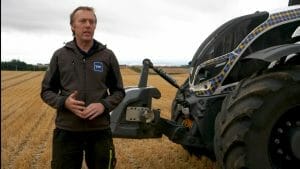
“Barley has been the last crop I’ve gone over to direct drilling with, but we successfully tried it on two-thirds of our area last spring, sowing directly into overwintered stubble. We will direct drill all of our barley again this spring, either into overwintered stubble or after a cover crop.
“It’s really pleasing for me to see that LG Diablo works in that direct drilled scenario, and still produces a good yield and grain quality. I’m very happy with it.”
The farm’s target spring barley yield is usually around 7.4-8.6 t/ha (3-3.5 t/acre), and this year’s 35 ha of LG Diablo was at the top end of that range, despite some very dry conditions during the growing season.
Quality was good too, with nitrogen coming in at 1.52%, and specific weight at 67.4 kg/hl, allowing everything to meet the malting specification required by grain buyer, Simpsons Malt.
“It produced a nice bold grain, despite the very dry spell. Everything hit the spec for malting, which is spot-on.”
Mr White acknowledges there were a few light grains this season, which he attributes to the lack of rain, preventing some grain from maturing and filling fully. “We certainly haven’t seen any issues with screenings before, so I’m sure it’s due to the year, not the variety.”
Maximising establishment
Mr White recognises that his Mzuri drill does move more soil than other direct drills, but believes this benefits barley establishment in the spring, as it helps aerate the soil, warm it up and mineralise some nitrogen.
Switching from a combination drill to the Mzuri has also allowed him to sow spring barley at variable seed rates to account for establishment differences on varied soil types, and put fertiliser ‘down the spout’ with seed, to get crops off to a good start.
Seed rates last season typically ranged from 380-440 seeds/m2 on the variable soils, with crops sown on 33cm rows. That is a much wider spacing than spring barley is conventionally sown at, but he believes LG Diablo’s vigour enables it to fill the gaps between rows nicely.
“Also, it doesn’t brackle, which is something that is always a threat if weather turns catchy at harvest, especially on wider rows.”
Wider benefits of direct drilling
Soil carries machinery better when it is not ploughed.
Moving less soil reduces total fuel consumption which saves money and improves the carbon credentials of direct-drilled malting barley.
In demand from distillers
LG Diablo’s consistency is valued by end users too, says Mike Dagg, senior grain trader at Simpsons Malt, who expects it to remain one of the top two varieties grown in Scotland for distilling over coming years.
“We’ve had the variety for five or six years now, and we know it goes through the malting process very well. If it performs well going through the malting process, then there’s every chance the malt product will also do well going through distilling too.”
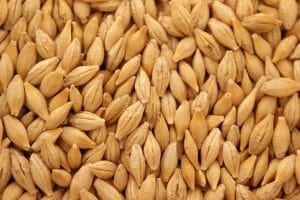
Indeed, over the past few years, LG Diablo has shown consistently good performance in distilleries, both in terms of spirit yields and processability, which ultimately leads to good efficiency and maintains demand for the variety, he says.
“LG Diablo is now pretty universally accepted by the majority of the Scottish distilling industry, and I don’t really see that changing anytime soon.
“Because LG Diablo is so consistent, and benefits from dual use approval for brewing and distilling, it’s got the ability to compete with, and hold its ground against, any new varieties coming along.
“I don’t see anything coming through breeding programmes currently that suggests LG Diablo and Laureate will lose their dominance in the Scottish distilling market.”
Dominating the 2023/24 AHDB Recommended ListIt’s a grand slam as Limagrain UK’s exciting new wheat, winter barley and oilseed rape varieties, take leading positions across the 2023/24 AHDB Recommended List.
LG Redwald secures poll position as the highest yielding winter wheat.
LG Caravelle is the highest yielding two row winter barley.
Attica joins as the highest yielding oilseed rape variety, with the essential turnip yellows (TuYV) and pod shatter resistance traits.
LG Wagner is the highest yielding addition to the northern OSR Recommended List.
LG Redwald sets a new standard for high yielding wheats, yielding 107% in the UK, (107% in the east and 109% in the west). As a soft wheat, the variety also offers potential for distilling.
These high yields have been consistently proven across National List trials, over seasons, drilling date and soil type, particularly in the second wheat and later drilling situations.
LG Redwald has an excellent disease resistance profile, with very good Septoria resistance as well as orange wheat blossom midge (OWBM) resistance.
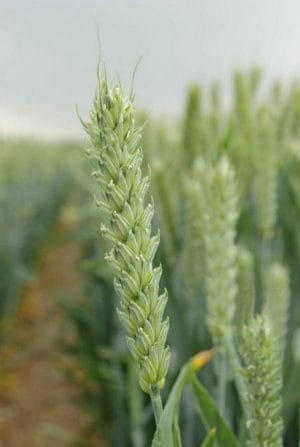
LG Redwald
“It is an exciting variety that should deliver for growers in 2023/24, if supported with good agronomic practise to ensure it meets its full potential on farm, and comes at a time when growers are looking more than ever to maximise output in order to maintain profit in times of increasing costs.”
– says Ron Granger, arable technical manager.
LG Caravelle is the highest yielding two row winter barley to join the 2023/24 Recommended List.
LG Caravelle dispels any misconception that two row barleys are lower yielding than hybrids.
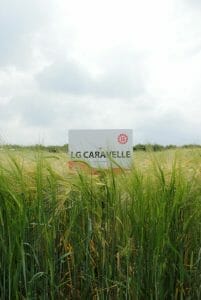
LG Caravelle
It offers UK yields of 106.3% – which is as good as the top yielding hybrid barley variety – and yields 2% above hybrids in the east.
These high yields are backed up by an excellent disease profile, reflected in LG Caravelle’s high untreated yields. LG Caravelle also offers an exceptionally high specific weight for a winter barley, of 71.8 kg/hl.
It is an early maturing variety with stiff straw; both important characteristics for a winter barley.
Attica is a newly recommended fully loaded hybrid with full UK recommendation. It joins the Recommended List as the highest yielding variety to combine stable high yields with the genetic security of TuYV and pod shatter resistance traits.
Attica has a strong autumn growth habit, offering growers a wide drilling window and a very good disease resistance package.
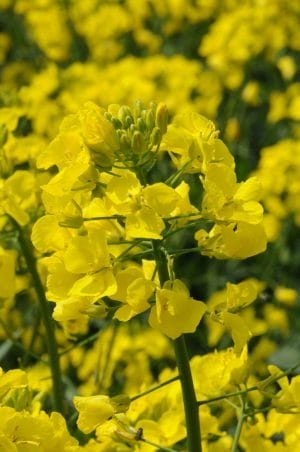
Attica
LG Wagner joins the north Recommended List as the highest yielding variety (108.1%). In 2022, it was the highest yielding variety, also offering the security of pod shatter and TuYV resistance. It is a shorter hybrid with stiff stems, combined with solid light leaf spot resistance and good stem health.
“This is a tremendous achievement and is the first time that any breeder has achieved this level of success across all of the cropping sectors in the last decade, if not longer.”
– says William Charlton, marketing manager for arable seeds.
“We believe this success is built on our unique UK focussed breeding approach, which means we are able to select for the UK’s maritime climate from day one in the breeding programme. This allows us to look for consistently high yielding varieties from the very start of our programme, to suit UK growers and end user requirements.”































